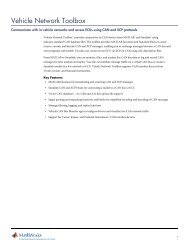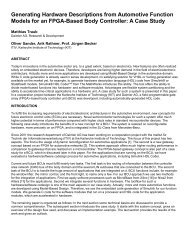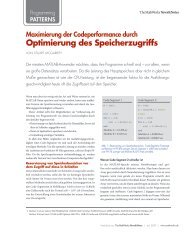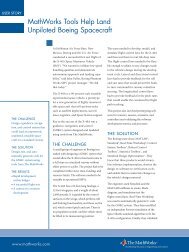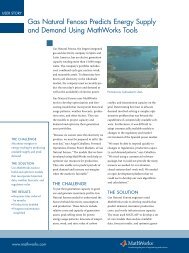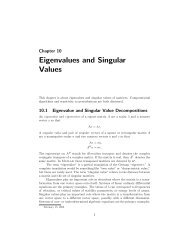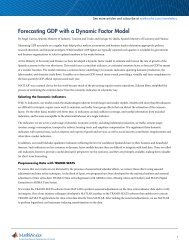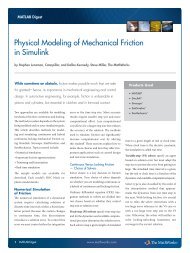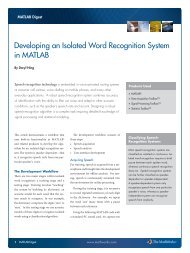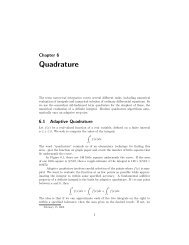Chapter 8 Exponential Function - MathWorks
Chapter 8 Exponential Function - MathWorks
Chapter 8 Exponential Function - MathWorks
You also want an ePaper? Increase the reach of your titles
YUMPU automatically turns print PDFs into web optimized ePapers that Google loves.
0.9<br />
0.85<br />
0.8<br />
0.75<br />
0.7<br />
0.65<br />
0.6<br />
0.55<br />
plot(t,ydot./y)<br />
axis([0 2 .5 .9])<br />
0.5<br />
0 0.2 0.4 0.6 0.8 1 1.2 1.4 1.6 1.8 2<br />
Figure 8.2. The ratio, ˙y/y.<br />
We see that the ratio of the derivative to the function, shown in figure 8.2, has a<br />
constant value, ˙y/y = 0.6931..., that does not depend upon t .<br />
Now, if you are following along with a live Matlab, repeat the preceding<br />
calculations with y = 3 t instead of y = 2 t . You should find that the ratio is again<br />
independent of t. This time ˙y/y = 1.0986.... Better yet, experiment with expgui.<br />
If we take any value a and look at y = a t , we find that, numerically at least,<br />
the ratio ˙y/y is constant. In other words, ˙y is proportional to y. If a = 2, the<br />
proportionality constant is less than one. If a = 3, the proportionality constant is<br />
greater than one. Can we find an a so that ˙y/y is actually equal to one? If so, we<br />
have found a function that is equal to its own derivative.<br />
The approximate derivative of the function y(t) = a t is<br />
˙y(t) = at+h − a t<br />
h<br />
This can be factored and written<br />
˙y(t) = ah − 1<br />
a<br />
h<br />
t<br />
So the ratio of the derivative to the function is<br />
˙y(t)<br />
y(t) = ah − 1<br />
h<br />
The ratio depends upon h, but not upon t. If we want the ratio to be equal to 1,<br />
we need to find a so that<br />
a h − 1<br />
h<br />
= 1<br />
3




